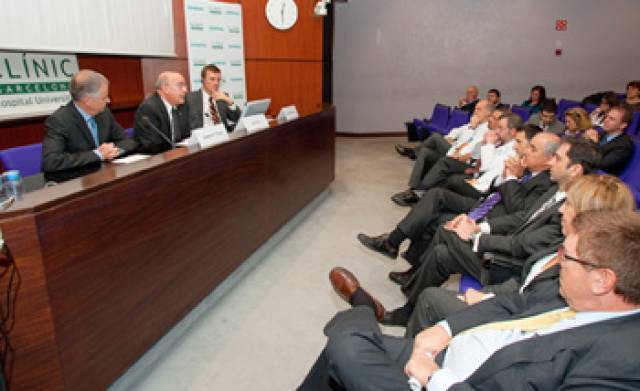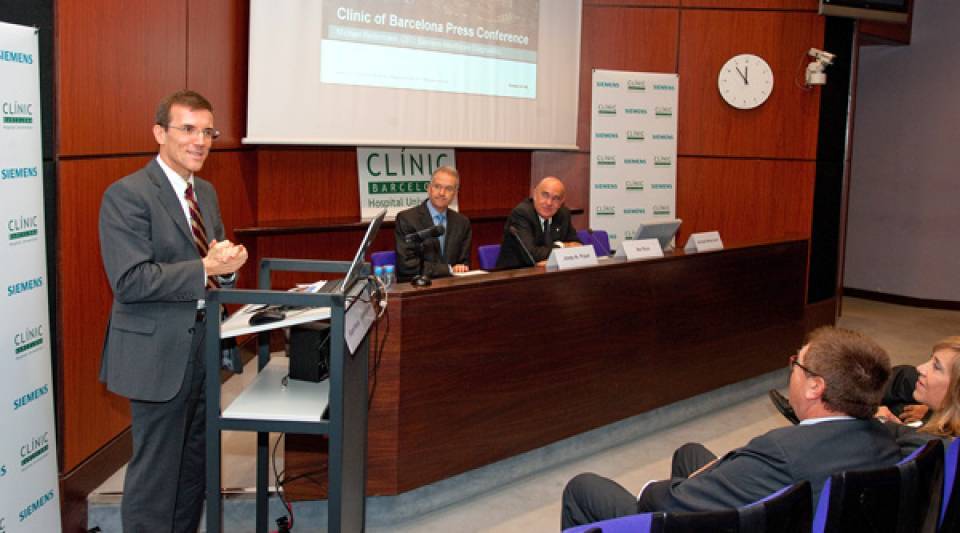“The Siemens – Hospital Clínic partnership is based on a shared vision of the evolution of healthcare delivery, and we are striving to uncover innovative paths to patient care,” said Josep Maria Piqué, MD, PhD, General Manager, Hospital Clínic of Barcelona. “Together, we have made significant strides, and today are pleased to share our progress to date in the exploration of minimally-invasive tools for the potential assessment and risk management of sudden cardiac death and liver fibrosis.”

To address this clinical need, Hospital Clinic investigators are collaborating with Siemens to take an innovative approach to determining SCD risk. Rather than assessing heart function, investigators are exploring how minimally invasive diagnostics may be used as stratification tools to identify severity of cardiac fibrosis, or scarring in the heart, which increases risk of SCD.
More accurate identification of SCD risk may in turn help physicians to better determine patients most likely to benefit from preventative measures. Promising preliminary results from a multidisciplinary, prospective study of 180 patients show viability for the use of high resolution magnetic resonance imaging and in vitro diagnostic markers in the minimally-invasive assessment of cardiac fibrosis.
“The assessment of fibrosis in the heart has the potential to make a significant impact on the care of patients at risk for sudden cardiac arrest,” said Michael Reitermann, CEO, Diagnostics Division, Siemens Healthcare. “This program is just one example of how our collaboration with Hospital Clinic of Barcelona aligns with Siemens commitment to arm healthcare professionals with the information they need to fight the most threatening diseases.”
Additionally, information presented today demonstrate the potential clinical utility of imaging and blood tests in assessing chronic liver disease (CLD), another leading cause of death worldwide. The partnership’s liver disease program employs Siemens ADVIA Centaur® Enhanced Liver Fibrosis (ELF™) Test(1), a direct biomarker panel for the assessment of liver fibrosis, and Acoustic Radiation Force Impulse (ARFI), radiology imaging that evaluates liver tissue with both qualitative assessment and quantitative values through Virtual Touch™ applications available on the ACUSON S2000™ and ACUSONS3000™ ultrasound system(2).
The recent introduction of these advanced tools into the management of patients with CLD is enabling Hospital Clínic physicians to more closely monitor disease progression and adjust treatment strategies accordingly.
The Siemens – Hospital Clínic collaboration has resulted in submission of several patents to the U.S. Patent Office in the areas of fetal medicine, precision medicine and oncology. The value of the program has also been demonstrated to healthcare professionals worldwide via publication of original papers in 28 peer-reviewed medical journals and 51 scientific meeting presentations. Thanks to this long term relationship with Siemens Healthcare, the Biomedical Diagnostic Center at Hospital Clínic of Barcelona leads researches in these and other fields.
Notes:
(1) Product availability may vary from country to country and is subject to varying regulatory requirements. Not available for sale in the U.S.
(2) The combination of the ELF test and ARFI is under feasibility evaluation. The ELF test and ARFI are not available for sale for use in combination and the future availability of these products with such an intended use cannot be guaranteed.

